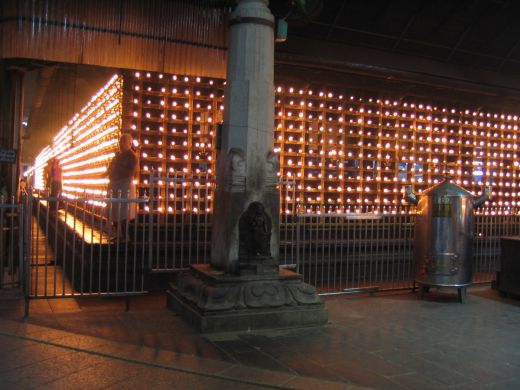I wanted to do something different this Diwali! I wanted to do justice to the “festival of lights!”
So, I first got the lights in place.
I wanted to light up the mini temple at home so that the house looks more lively and ready for Diwali. I wanted to convert the temple to resemble the one down South. Now, most Kerala (India) temples have been carved out of stone. Each side of the temple has rectangular grids with lamps attached to it. These oil lamps are lit during sunset and adorn the temple throughout the evening.
Well, our temple is made of wood and is attached to the wall and hence cannot sustain the weight of oil lamps. So I used a string of little light bulbs and taped them neatly into each box of the entire grid.
Next in line, the Rangoli!
Rangoli forms an important part of Diwali celebrations. Rangoli is made on the floor with coloured powder that is a little finer than salt. Once the outline is in place, several bright colours are used to fill the drawing up. Traditionally, the women of the house make floral patterns, birds, lamps and Hindu deities. But my friends and I went a little off track this time… :p









